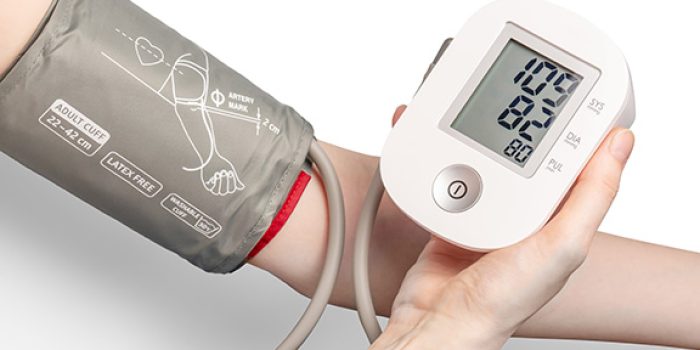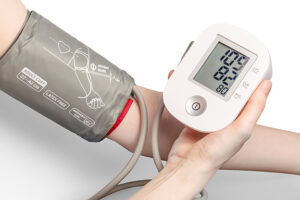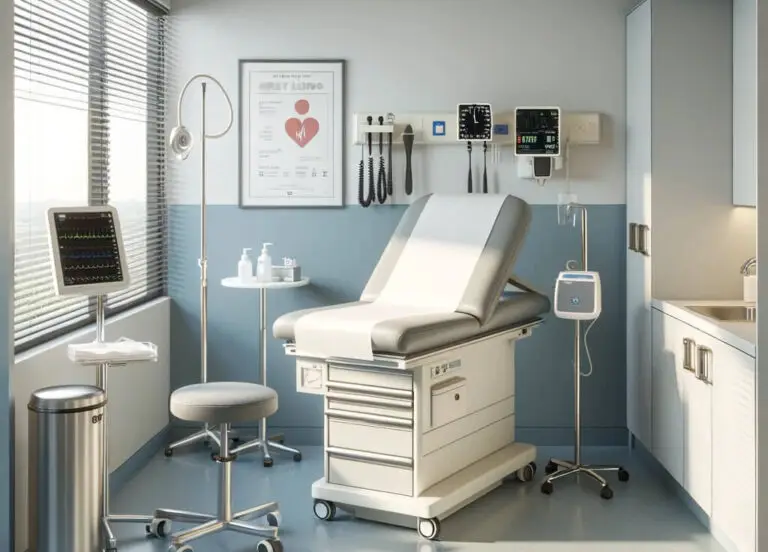Article Last Updated May 6, 2022
Understand the Disease, the M2-1, and 38 CFR.
7101 Hypertensive Vascular Disease
§ 4.104 Schedule of ratings – cardiovascular system
7101 Hypertensive vascular disease (hypertension and isolated systolic hypertension):
Rating
Diastolic pressure predominantly 130 or more
60%
Diastolic pressure predominantly 120 or more
40%
Diastolic pressure predominantly 110 or more, or; systolic pressure predominantly 200 or more
20%
Diastolic pressure predominantly 100 or more, or; systolic pressure predominantly 160 or more, or; minimum evaluation for an individual with a history of diastolic pressure predominantly 100 or more who requires continuous medication for control
10%
Key
Highlights in Yellow reference the M21-1.
Highlights in Blue reference the 38 CFR.
Highlights in Green reference both the M21-1 and 38 CFR.
Disclosure: The information provided is not medical advice. The information provided is collected from legal and medical resources including the authors occupational experience.
Quick Link
Understanding Blood Pressure
When the heart pushes blood through blood vessels it puts pressure on the walls of the vessels. “Blood pressure” is a measurement of the pressures upon the blood vessels as the heart pumps blood to and from the body and organs. 1
A blood pressure is measured by using a sphygmomanometer. Don’t worry if you can’t pronounce it, 99% of those in the medical field just call it a blood pressure cuff.
Blood pressure is measured in units of millimeters of mercury (mm Hg). 1
A blood pressure reading comes with two numbers:
1. Systolic pressure is the number at the top of the blood pressure reading. It represents the pressure in the blood vessels when the heart squeezes blood out of the heart.
2. Diastolic pressure is the number on the bottom of the blood pressure reading. It represents the pressure in the blood vessels when the heart is not squeezing.
In an otherwise healthy person, a blood pressure reading should be less than 120mm Hg systolic and less than 80mm Hg diastolic. 2
Drug therapy for control of high blood pressure, known as hypertension, is recommended in a person without an increased risk for a cardiovascular disease when the systolic reading is 140 or higher or when the diastolic reading is 90 or higher.
Treatment recommendations change if a person has diseases known to contribute or increase the risk for development of cardiovascular disease such as diabetes mellitus and kidney disease.
Pre-hypertension
Definition
Pre-hypertension is defined in medical literature as a systolic reading between 120mm Hg and 139mm Hg or a diastolic reading between 80mm Hg and 89mm Hg. 3
The M21-1 defines pre-hypertension the same as the medical literature:
A systolic pressure between 120mm Hg and 139mm Hg and diastolic pressure from 80mm Hg to 89mm Hg.
The M21-1 reports that Pre-hypertension is not a disability for VA purposes. 4
Symptoms
There are no significant symptoms associated with pre-hypertension. Pre-hypertension is identified in the clinic following blood pressure readings.
Diagnosis
Pre-hypertension is not a billable diagnosis according to the CDC’s guide for 2022. “Hypertension, Transient” is the most appropriate diagnostic term to use. It is described as an “elevated blood pressure reading without diagnosis of hypertension.” 4
Treatment
Nonpharmacological treatments are typically recommended in most people with pre-hypertension. However, medical practice guidelines, according to the JNC-7, recommend pharmacologic intervention in those who are at increased risk for cardiovascular events like those with diabetes mellitus or chronic kidney disease. 2
This means that a medical provider may prescribe treatment for pre-hypertension in a person with diabetes.
Occupational Impact
Pre-hypertension alone does not interfere with occupational tasks.
Hypertension
Definition
Hypertension is defined in medical literature as a systolic reading over 140mm Hg or a diastolic reading above 90mm Hg. 1
Both the M21-1 and 38 CFR define hypertension as a blood pressure reading where the diastolic number is predominantly 90mm or greater.
Symptoms
Most people do not have symptoms of hypertension.
Some people may develop headaches, shortness of breath, or nosebleeds. 6
Causes
There are many causes and risk factors for developing hypertension. In alphabetical order, some include:
- Arteriosclerosis
- Cardiovascular disease
- Coarctation of aorta 2
- Chronic kidney disease
- Cushing’s syndrome
- Diabetes mellitus
- Excess sodium intake
- Excess alcohol intake
- Family history
- Medication
- Pheochromocytoma
- Physical inactivity
- Psychological stress 7
- Primary aldosteronism
- Renovascular disease
- Sleep apnea
- Steroid therapy
- Thyroid/Parathyroid disease
- Chronic pain 8
- Mental health conditions 9, 10
- Toxins 11
More specifically in regards to toxins, the 2018 review of evidence of health problems that may be linked to exposure to Agent Orange and other herbicides used during the Vietnam War found sufficient evidence of an association for hypertension. However, hypertension has yet to be added to a presumptive list for Agent Orange, as of May 5, 2022. 11
Therefore, if a veteran applies for service connection for hypertension as a result of Agent Orange exposure a medical expert will have to provide a medical opinion on the claim. The medical expert would be required to assess the veteran’s risk factors and medical conditions to determine the cause or contributing factors associated with hypertension including contribution of Agent Orange exposure upon the hypertension.
The VA will not view hypertension as a complication of diabetes mellitus when the onset of hypertension was before diabetes mellitus and there has been no change in the treatment for hypertension and no increase in blood pressure readings.
Diagnosis
Diagnosis of hypertension in the clinic is determined when the medical provider reviews blood pressure readings on 2 or more occasions while considering transient causes. An example of transient cause would be smoking or acute pain. 7
Both the M21-1 and 38 CFR state that “Hypertension or isolated systolic hypertension must be confirmed by readings taken two or more times on at least three different days.”
The M21-1 goes on to elaborate that if the basis of the veteran’s claim is that his/her hypertension condition developed in service, the veteran does NOT have to show proof of 2 readings or more on 3 different days. The decision maker at the VA is instructed to critically evaluate the evidence to ensure the in-service diagnosis was based on blood pressure readings as defined by the 38 CFR.
If for some reason, the evidence does not persuade the decision maker at the VA, additional medical clarification, or a medical opinion, may be ordered to clarify the evidence.
If a veteran develops hypertension within 12 months following discharge, the veteran is entitled to service connection for hypertension as a chronic disease which developed during a presumptive period. (38 CFR 3.303(b))
According to the M21-1, in order to meet the requirement of a CURRENT DIAGNOSIS and obtain a service connection for hypertension the veteran must have one of the following:
a. current blood pressure readings which meet the definition of hypertension
b. evidence which shows a diagnosis of hypertension from a competent medical provider and currently being treated with medication.
Treatment
Prescription medication is the standard treatment for hypertension after lifestyle modifications have failed.
A primary care provider, heart specialist, and kidney specialist are the most common providers to treat and manage hypertension.
Common Question: Can I be diagnosed in the urgent care with hypertension?
A: If the provider has access to blood pressure readings on more than 1 occasion in a medical setting, then the provider may be able to diagnosis hypertension. However, the urgent care is not the recommended medical setting for diagnosis, treatment, and management for hypertension.
Complications
Complications may develop from chronic hypertension. In alphabetical order, some complications include:
- Aneurysm
- Arteriosclerosis
- Atherosclerosis
- Cerebral vascular disease/Stroke/TIAs
- Chronic kidney failure
- Dementia
- Erectile dysfunction
- Eye retinopathy
- Heart attack 6
- Heart failure
- Left ventricular hypertrophy 7
- Nephritis
- Peripheral vascular disease 12
The M21-1 acknowledges that hypertension may result in cardiac muscle hypertrophy, cardiac dilation and decompensation.
The M21-1 also acknowledges that long-standing hypertension may lead to hardening of the blood vessels, known as arteriosclerosis, and can injure vessels of other organs. However, the M21-1 specifically states that arteriosclerosis is not considered a worsening of hypertension.
The M21-1 lists complications of hypertension:
- Coronary occlusion of the heart (myocardial infaraction)
- Cerebral arteriosclerosis
- Myocardial damage
- Nephrosclerosis with impaired renal function
- Thrombosis with hemiplegia
Further notes in the M21-1 indicate that a claim for complications associated with hypertension must be made and will not be inferred and suggests that a medical opinion is needed to make the link between hypertension and the complication.
Developing scars related to hypertension is very rare.
Occupational Impact
It is very rare for controlled hypertension alone to interfere with occupational tasks.
It is uncommon that uncontrolled hypertension alone to interfere with occupational tasks.
Compensation
The rating schedule for hypertension is displayed at the top of this webpage.
**Personal Note: Since being in the clinic in 2009, I have never seen a person with a diastolic blood pressure reading predominantly 130 or higher. From experience I can say that a person with a diastolic reading that high would be critically ill and needs immediate medical treatment.
• In regards to diabetes and hypertension, the VA has outlined in the M21-1 that the veteran needs to specifically apply for hypertension as a complication of or secondary to diabetes mellitus except when the evidence shows the hypertension developed after the diabetes mellitus and the veteran has diabetic kidney disease.
• The M21-1 notes to compensate the veteran for hypertension separately from heart disease. Separate compensation for hypertension is awarded.
• The M21-1 notes that if a veteran has the absence of a kidney or requires kidney dialysis then separate compensation for hypertension is awarded. Otherwise, separate compensation is not awarded for hypertension.
• The 38CFR notes to include hypertension developed from aortic insufficiency as a part of aortic insufficiency. Separate compensation for hypertension is not awarded.
• The 38CFR notes to include hypertension developed from hyperthyroidism as a part of hyperthyroidism. Separate compensation for hypertension is not awarded.
Additional Information
A primary care provider, cardiologist, or kidney specialist can fill out a Disability Benefits Questionnaire, or DBQ, for hypertension in the medical office.
The veteran must be present in the office to complete the DBQ.
The Hypertension DBQ takes approximately 15 minutes for the provider to complete.
The DBQ can be found online here.
Isolated Systolic Hypertension
Definition
Isolated Systolic Hypertension, or ISH, is a type of hypertension.
The Mayo Clinic defines ISH as a systolic blood pressure 130mm Hg or higher and the diastolic blood pressure less than 80mm Hg. 13
Both the M21-1 and 38CFR report “isolated systolic hypertension means that systolic blood pressure is predominately 160mm or greater with diastolic blood pressure of less than 90mm.”
Symptoms
Most people do not have symptoms of ISH.
Some people may develop headaches, shortness of breath, or nosebleeds.
Causes
There are multiple causes and risk factors for developing ISH. In alphabetical order, some include:
- Aortic valve insufficiency
- Anemia
- Arteriosclerosis
- Arteriovenous fistula
- Chronic kidney disease
- Diabetes mellitus
- Heart valve disease
- Hyperthyroidism 13
- Medication
- Peripheral vascular disease
- Renal (kidney) artery stenosis 12
Diagnosis
Diagnosis of hypertension in the clinic is determined when the medical provider reviews blood pressure readings on 2 or more occasions while considering transient causes. An example of transient cause would be smoking or acute pain. 7
Both the M21-1 and 38 CFR state that “Hypertension or isolated systolic hypertension must be confirmed by readings taken two or more times on at least three different days.”
The M21-1 goes on to elaborate that if the basis of the veteran’s claim is that his/her ISH condition developed in service, the veteran does NOT have to show proof of 2 readings or more on 3 different days. The decision maker at the VA is instructed to critically evaluate the evidence to ensure the in-service diagnosis was based on blood pressure readings as defined by the 38 CFR.
If for some reason, the evidence does not persuade the decision maker at the VA, additional medical clarification, or a medical opinion, may be ordered to clarify the evidence.
If a veteran develops ISH within 12 months following discharge, the veteran is entitled to service connection for ISH as a chronic disease which developed during a presumptive period. (38 CFR 3.303(b))
According to the M21-1, in order to meet the requirement of a CURRENT DIAGNOSIS and obtain a service connection for ISH the veteran must have one of the following:
a. current blood pressure readings which meet the definition of ISH
b. evidence which shows a diagnosis of ISH from a competent medical provider and currently being treated with medication.
Treatment
Prescription medication may be used to treat isolated systolic hypertension when possible and after lifestyle modifications have failed. Sometimes, isolated systolic hypertension can be difficult to manage because using prescription medication to lower the systolic number often lowers the diastolic number and results in symptom development of low blood pressure in the person.
A primary care provider, heart specialist, and kidney specialist are the most common providers to treat and manage isolated systolic hypertension.
Common Question: Can I be diagnosed in the urgent care with hypertension?
A: If the provider has access to blood pressure readings on more than 1 occasion in a medical setting, then the provider may be able to diagnosis isolated systolic hypertension. However, the urgent care is not the recommended medical setting for diagnosis, treatment, and management for isolated systolic hypertension.
Complications
Complications may develop from chronic isolated systolic hypertension. In alphabetical order, some complications include:
- Aneurysm
- Arteriosclerosis
- Atherosclerosis
- Cerebral vascular disease/Stroke/TIAs
- Chronic kidney failure
- Dementia
- Erectile dysfunction
- Eye retinopathy
- Heart attack 6
- Heart failure
- Left ventricular hypertrophy 7
- Nephritis
- Peripheral vascular disease 12
- Chronic pain 8
- Mental health conditions 9, 10
The M21-1 acknowledges that isolated systolic hypertension may result in cardiac muscle hypertrophy, cardiac dilation and decompensation.
The M21-1 also acknowledges that long-standing isolated systolic hypertension may lead to hardening of the blood vessels, known as arteriosclerosis, and can injure vessels of other organs. However, the M21-1 specifically states that arteriosclerosis is not considered a worsening of ISH.
The M21-1 lists complications of isolated systolic hypertension:
- Coronary occlusion of the heart (myocardial infaraction)
- Cerebral arteriosclerosis
- Myocardial damage
- Nephrosclerosis with impaired renal function
- Thrombosis with hemiplegia
Further notes in the M21-1 indicate that a claim for complications associated with isolated systolic hypertension must be made and will not be inferred and suggests that a medical opinion is needed to make the link between hypertension and the complication.
The VA will not view ISH as a complication of diabetes mellitus when the onset of ISH was before diabetes mellitus and there has been no change in the treatment for ISH and no increase in blood pressure readings.
Developing scars related to isolated systolic hypertension is very rare.
Occupational Impact
It is rare for controlled isolated systolic hypertension to interfere with occupational tasks.
It is uncommon for uncontrolled isolated systolic hypertension to interfere with occupational tasks.
Compensation
The rating schedule for isolated systolic hypertension is displayed at the top of this webpage.
• In regards to diabetes and ISH, the VA has outlined in the M21-1 that the veteran needs to specifically apply for ISH as a complication of or secondary to diabetes mellitus except when the evidence shows the ISH developed after the diabetes mellitus and the veteran has diabetic kidney disease.
• The M21-1 notes to compensate the veteran for ISH separately from heart disease. Separate compensation for hypertension is awarded.
• The M21-1 notes that if a veteran has the absence of a kidney or requires kidney dialysis then separate compensation for ISH is awarded. Otherwise, separate compensation is not awarded for ISH.
• The 38CFR notes to include ISH developed from aortic insufficiency as a part of aortic insufficiency. Separate compensation for ISH is not awarded.
• The 38CFR notes to include ISH developed from hyperthyroidism as a part of hyperthyroidism. Separate compensation for ISH is not awarded.
Additional Information
A primary care provider, cardiologist, or kidney specialist can fill out a Disability Benefits Questionnaire, or DBQ, for isolated systolic hypertension in the medical office.
The veteran must be present in the office to complete the DBQ.
The Hypertension DBQ takes approximately 15 minutes for the provider to complete.
The DBQ can be found online here.
————————————
References:
1. InformedHealth.org [Internet]. Cologne, Germany: Institute for Quality and Efficiency in Health Care (IQWiG); 2006-. What is blood pressure and how is it measured? 2010 Jun 24 [Updated 2019 May 23]. Available from: https://www.ncbi.nlm.nih.gov/books/NBK279251/
2. Reference Card From the Seventh report of the Joint National Committee on Prevention, Detection, Evaluation, and Treatment of High Blood Pressure (JNC7). U.S. Department of Health and Human Services. May 2003. Accessed May 5, 2022 from https://www.nhlbi.nih.gov/sites/default/files/media/docs/phycard.pdf
3. Zhang, W., & Li, N. (2011). Prevalence, risk factors, and management of prehypertension. International journal of hypertension, 2011, 605359. https://doi.org/10.4061/2011/605359
4. M21-1 Adjudication Procedures Manual. U.S. Department of Veterans Affairs. Accessed May 5, 2022 from https://www.knowva.ebenefits.va.gov/system/templates/selfservice/va_ssnew/help/customer/locale/en-US/portal/554400000001018
5. ICD-10-cm Official Guidelines for Coding and Reporting. Centers for Disease Control and Prevention. 2022 Accessed May 5, 2022 from https://www.cdc.gov/nchs/data/icd/10cmguidelines-FY2022-7-2022-508.pdf
6. High blood pressure (hypertension). Mayo Clinic. Published July 1, 2021. Accessed May 5, 2022 from https://www.mayoclinic.org/diseases-conditions/high-blood-pressure/symptoms-causes/syc-20373410
7. Paul K. Whelton, Robert M. Carey, Wilbert S. Aronow, Donald E. CaseyJr, Karen J. Collins, Cheryl Dennison Himmelfarb, Sondra M. DePalma, Samuel Gidding, Kenneth A. Jamerson, Daniel W. Jones, Eric J. MacLaughlin, Paul Muntner, Bruce Ovbiagele, Sidney C. Smith Jr, Crystal C. Spencer, Randall S. Stafford, Sandra J. Taler, Randal J. Thomas, Kim A. Williams Sr, Jeff D. Williamson and Jackson T. Wright Jr. Originally published 13 Nov 2017 https://doi.org/10.1161/HYP.0000000000000065 Hypertension. 2018;71:e13–e115
8. Bruehl, Stephen PhD*; Chung, Ok Yung MD, MBA*; Jirjis, James N. MD†; Biridepalli, Sujatha MBBS* Prevalence of Clinical Hypertension in Patients With Chronic Pain Compared to Nonpain General Medical Patients, The Clinical Journal of Pain: March 2005 – Volume 21 – Issue 2 – p 147-153
9. Mucci, N., Giorgi, G., De Pasquale Ceratti, S., Fiz-Pérez, J., Mucci, F., & Arcangeli, G. (2016). Anxiety, Stress-Related Factors, and Blood Pressure in Young Adults. Frontiers in psychology, 7, 1682. https://doi.org/10.3389/fpsyg.2016.01682
10. Rubio-Guerra, A. F., Rodriguez-Lopez, L., Vargas-Ayala, G., Huerta-Ramirez, S., Serna, D. C., & Lozano-Nuevo, J. J. (2013). Depression increases the risk for uncontrolled hypertension. Experimental and clinical cardiology, 18(1), 10–12.
11. Vietnam Veterans and Agent Orange Exposure – New Report. The National Academies of Sciences, Engineering, and Medicine. 2018. Obtained May 5, 2022 from https://www.nationalacademies.org/news/2018/11/vietnam-veterans-and-agent-orange-exposure-new-report
12. Tan JL, Thakur K. Systolic Hypertension. [Updated 2021 Aug 9]. In: StatPearls [Internet]. Treasure Island (FL): StatPearls Publishing; 2022 Jan-. Available from: https://www.ncbi.nlm.nih.gov/books/NBK482472/
13. Isolated systolic hypertension: A health concern? Mayo Clinic. Published April 29, 2020. Accessed May 5, 2022 from https://www.mayoclinic.org/diseases-conditions/high-blood-pressure/expert-answers/hypertension/faq-20058527







